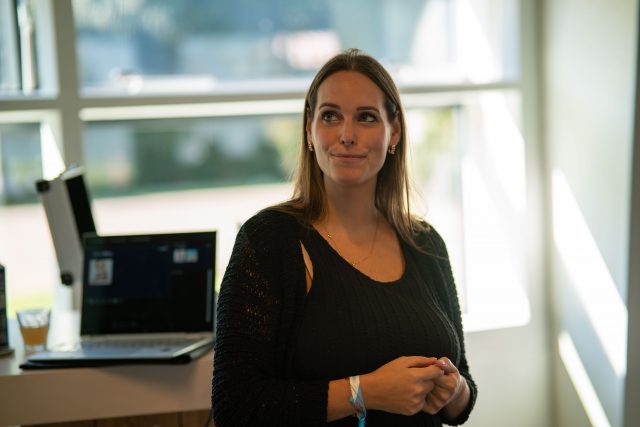
Nowadays, anyone who puts out a vacancy often does not have to expect much of a response. It is therefore not surprising that more and more organizations prefer to take matters into their own hands and actively look for the right candidates themselves. But what are the 10 biggest trends in this area of sourcing? We discuss it with Jan-Karel Sindorff and Milou Verhoeks ( photo above ), founders of Cooble, the fast-growing agency that has made this its specialty.
Trend 1. It’s happening more and more
‘Sourcing was for a long time one of the underexposed parts of the entire recruitment chain,’ notes Verhoeks. ‘Many companies thought that the recruiter should just do it on the side. And then it actually hardly happened at all. But the game of the upside down world still turns out to be a very successful game. You notice that by sourcing yourself you still reach people on the labor market that you cannot actually reach in any other way. It is therefore not surprising that we see more and more competition for our agency.’
Trend 2. It’s here to stay
‘Sourcing has taken off due to the enormous shortage on the labor market in recent years. Back then it was often employers’ last straw. But you now see that the market is also adapting to it,” Sindorff adds. ‘If you look at new generations on the labor market, it is much more accepted for them to be approached. They are much less likely to look for a job themselves. It is small, personal, tailor-made. That appeals to them.’
“Although I am shocked by what I occasionally see happening in the market,” says Verhoeks. ‘Bulk emails, approaching many people at once. That doesn’t work, and only leads to very low response rates. Candidates are annoyed by this. And it has a negative effect on your position as an employer. Technology is simply not ready to take over completely. LinkedIn, for example, has all kinds of new options, but we see in practice that you should not expect miracles from them, the personal approach still works better.’
Trend 3. More tech
Okay, so the technology is not yet at the point where the entire sourcing process can be automated. But in the meantime, more and more interesting tools are emerging, with or without AI. Verhoeks also sees this in her daily practice. ‘For example, we also work a lot with ChatGPT. With the information from a profile, ChatGPT can put together a nice, personal message. And something like automatic follow-ups can also be interesting. Things are increasingly moving in the direction of technology supporting your work. But you have to learn a tool not only to read , but also to interpret. And that remains difficult.’
Trend 4. Relevance wins
Sourcing is also increasingly important when it comes to employer branding , says Sindorff. ‘As soon as you send out a crappy message in your sourcing , investing in employer branding really makes less sense. People think something of that. That is why we plead not to send out bulk messages, people realize that very quickly, it is really not good for your figures. Because sourcing turns the game on the job market, you need to be sure you’re sending the right message to the right target group. Being relevant is important, especially to maintain your employer branding.’
Trend 5. Creativity counts
Sourcing is a creative profession, according to Verhoeks. ‘Did you know that we spend an average of 8 to 10 minutes on an approach message? It always takes time and attention to think about how best to approach people. It also often requires the necessary creativity. For example, we sometimes open a conversation with a comment like “Did you know that there are only 500 people with your name?” See, that often arouses interest. You might be able to automate something like that again, but then it quickly becomes a trick again and it doesn’t feel real, like an automatic congratulations on your birthday.’
Trend 6. Find and seduce
Speaking of which, according to both of them, sourcing is too often narrowed down to the question: can you find the right people? Do you know all the boolean strings to scour the internet and uncover those hidden gems? It is these types of issues that are often the subject of conferences such as SoSuEu , where European (tech) sourcers gather annually (and which will take place again this year on October 11 and 12 in Amsterdam ).
But according to Verhoeks, another important side of good sourcing is forgotten, and that is: seduction . ‘This game is both about finding and seducing. They are both equally important in sourcing. Seduction is more like marketing and sales, for example it is about whether you can write convincing messages. That’s really a sport.’
Trend 7. Beyond the vacancy
Sourcing often starts with an organization that cannot fill a vacancy, and then asks for help via Cooble, for example. But organizations that work with it for a while discover that it works even better if you don’t start over with every vacancy, but build up a talent pool and continue working from there. “If you start vacancy-driven sourcing you are a hunter , if you manage to build a talent pool you become a collector ,” says Sindorff.

Verhoeks: ‘If you source from one target group for a longer period of time and always keep in touch with it, after 2 years you will spend 80% of your time maintaining relationships. At the Public Prosecution Service , for example, we have a pool of just under 300 people. I know them, and I can call them about vacancies. That makes a big difference. Talent pooling has been a term in recruitment for a long time. But you see few successful examples. While you can actually get a lot of value out of it. Provided you work with the same people in your department for a long time, or work with the same agency for a long time, so that they can build a relationship with the talent pool.’
Trend 8. It is no longer a research and development agency
Previously, organizations sometimes saw sourcing as ‘an additional recruitment and selection agency’. But it is less and less the case, Verhoeks sees. ‘We are still primarily deployed when there is panic somewhere. But sourcing is not a magic wand, it has become more of a long-term activity. Fortunately, we have more and more customers who see the value of this. When sourcing, we know for certain that we will end up with people who do not feel like applying for a job, but are willing to think about another job. Getting people to that point requires more than a superficial relationship.’
Trend 9. Play outside, share inside
What is also becoming increasingly clear: sourcing is not just a way to find candidates, it is also a mirror, a kind of continuous market research. ‘We are always playing outside’, as Sindorff puts it. ‘As a result, we also gain a lot of knowledge from the market. We speak to many candidates and know what appeals to them and what doesn’t. You notice this, for example, with salaries, we know quite quickly whether what an organization offers matches what the market demands. I think it is always a condition that as a sourcing partner you also provide that knowledge back to your client.’

Transparency is important when sourcing, Verhoeks adds. ‘That is why all our customers receive a progress report every other week. This also includes feedback from candidates. Sometimes this leads to an uncomfortable conversation. But that does help. Because as a sourcer you are in continuous contact with the labor market, you can help other recruitment colleagues in the organization with their perception of the image that candidates have of you on the labor market. And you can then adjust your offering and sourcing accordingly.’
- Click here for the most recent Cooble Sourcing Benchmark
Trend 10. Sourcing as a red carpet
“We do not encourage an application, but an interview,” says Verhoeks. ‘Sourcing is increasingly a red carpet, candidates must feel welcome. You notice that low thresholds are becoming more important, the labor market is changing. More and more organizations are looking at how they can organize the process differently so that people no longer have to apply. The whole vacancy-driven sourcing is also playing out. It is increasingly important that the candidate wants to make contact. Then you can always see further afterwards. You see that people are increasingly open to this.’
Knowing more?
Milou Verhoeks will give more about what sourcing can mean for your employer brand during Werf&’s Webinar Week on Friday , October 6 at 12:30 PM . Click here to find out more, or for the other webinars .




